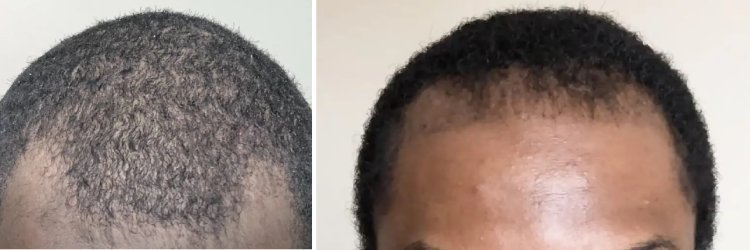Why Afro Hair Requires a Specialized Hair Transplant Approach
Afro hair transplants require a specialized approach due to the unique structure and growth pattern of Afro-textured hair.

Afro-textured hair is unique in its structure, curl pattern, and follicle shape. These characteristics make an Afro hair transplant for men and Afro hair transplant for women different from those performed on straight or wavy hair types. For individuals experiencing hair loss, finding the right transplant method is crucial for achieving natural-looking and long-lasting results. In this article, we will explore why Afro hair requires a specialized transplant approach and the best techniques available today.
Understanding Afro Hair Structure
Afro hair is distinct due to its tightly coiled and curly nature. The key characteristics include:
-
Curved Hair Follicles: Unlike straight hair follicles that grow vertically, Afro hair follicles are curved and more challenging to extract and implant correctly.
-
Higher Density Per Follicle: While individual hair strands may appear less dense, Afro hair typically has more strands growing from each follicle.
-
Prone to Keloid Scarring: Afro-textured skin is more susceptible to keloid scarring, making post-transplant care crucial.
Due to these unique attributes, a traditional hair transplant method that works well for straight or wavy hair may not deliver the same success for Afro-textured hair. This is why a specialized approach is necessary.
Challenges in Afro Hair Transplantation
-
Graft Extraction Difficulties
The curved nature of Afro hair follicles makes it more difficult to extract grafts without damaging them. Traditional FUE and the DHI methods for Afro Hair need to be adjusted to prevent a high transection (cutting) rate. -
Proper Implantation for Natural Hair Growth
Placing the grafts at the right angle and depth is crucial to match the natural curl pattern of Afro hair. -
Higher Risk of Scarring
Patients with Afro hair are more prone to keloid scarring, which can negatively affect the transplant results if not managed properly.
Best Methods for Afro Hair Transplant
1. FUE and the DHI Methods for Afro Hair
-
Follicular Unit Extraction (FUE):
-
Involves extracting individual hair follicles from the donor area.
-
Requires a specialized punch tool to accommodate the curved follicles.
-
Minimally invasive and leaves tiny scars that heal well.
-
-
Direct Hair Implantation (DHI):
-
Uses a Choi pen for direct implantation.
-
Ensures precise placement of hair follicles.
-
Suitable for those who want a denser, more natural look.
-
Both FUE and the DHI methods for Afro Hair are widely considered the best methods for Afro Hair Transplant, as they provide the highest success rates when performed by an experienced surgeon.
2. Afro Hair Transplant for Men
Men experiencing male pattern baldness or receding hairlines can benefit from customized transplant methods tailored to Afro hair types. Whether it’s filling in the crown area or restoring the hairline, selecting the right surgeon with expertise in Afro hair transplant for men is essential.
3. Afro Hair Transplant for Women
Women dealing with traction alopecia (caused by tight hairstyles) or genetic hair loss require a different approach. A skilled surgeon will consider hairline design and density to ensure a feminine, natural-looking result. Choosing an expert in Afro hair transplant for women can help achieve long-lasting and aesthetically pleasing results.
Choosing the Right Clinic and Surgeon
When opting for an Afro hair transplant, it is essential to:
-
Select a Surgeon with Experience in Afro Hair: Not all hair transplant surgeons specialize in Afro-textured hair. Research clinics that have documented successful results.
-
Check Before & After Results: Reviewing real case studies can help assess the clinic’s expertise.
-
Understand the Cost and Aftercare: Afro hair transplants may require additional expertise and tools, which can affect pricing. Post-procedure care is also crucial to ensure proper healing and hair growth.
Conclusion
Afro hair transplants require a specialized approach due to the unique structure and growth pattern of Afro-textured hair. The right method, such as FUE and the DHI methods for Afro Hair, can ensure a successful and natural-looking result. Whether you're considering an Afro hair transplant for men or an Afro hair transplant for women, it’s essential to consult an experienced specialist. Additionally, understanding the best methods for Afro Hair Transplant will help you make an informed decision about the most suitable treatment for your needs.
What's Your Reaction?















